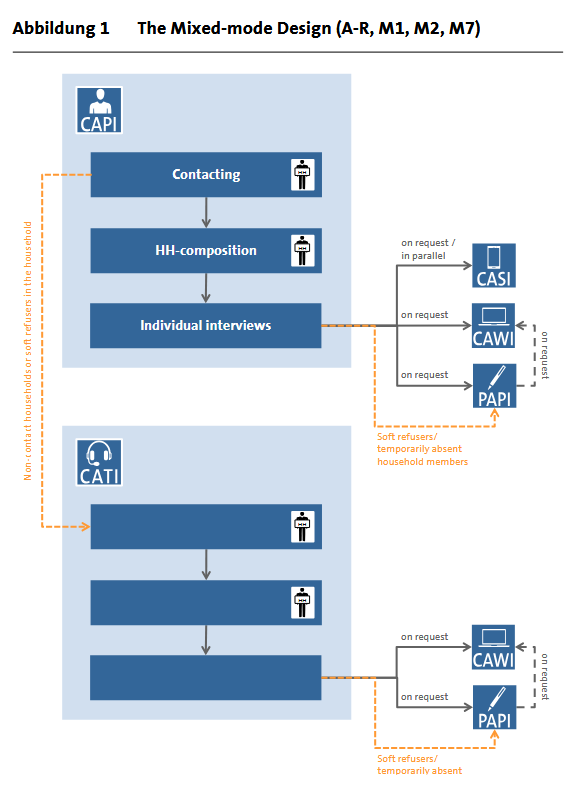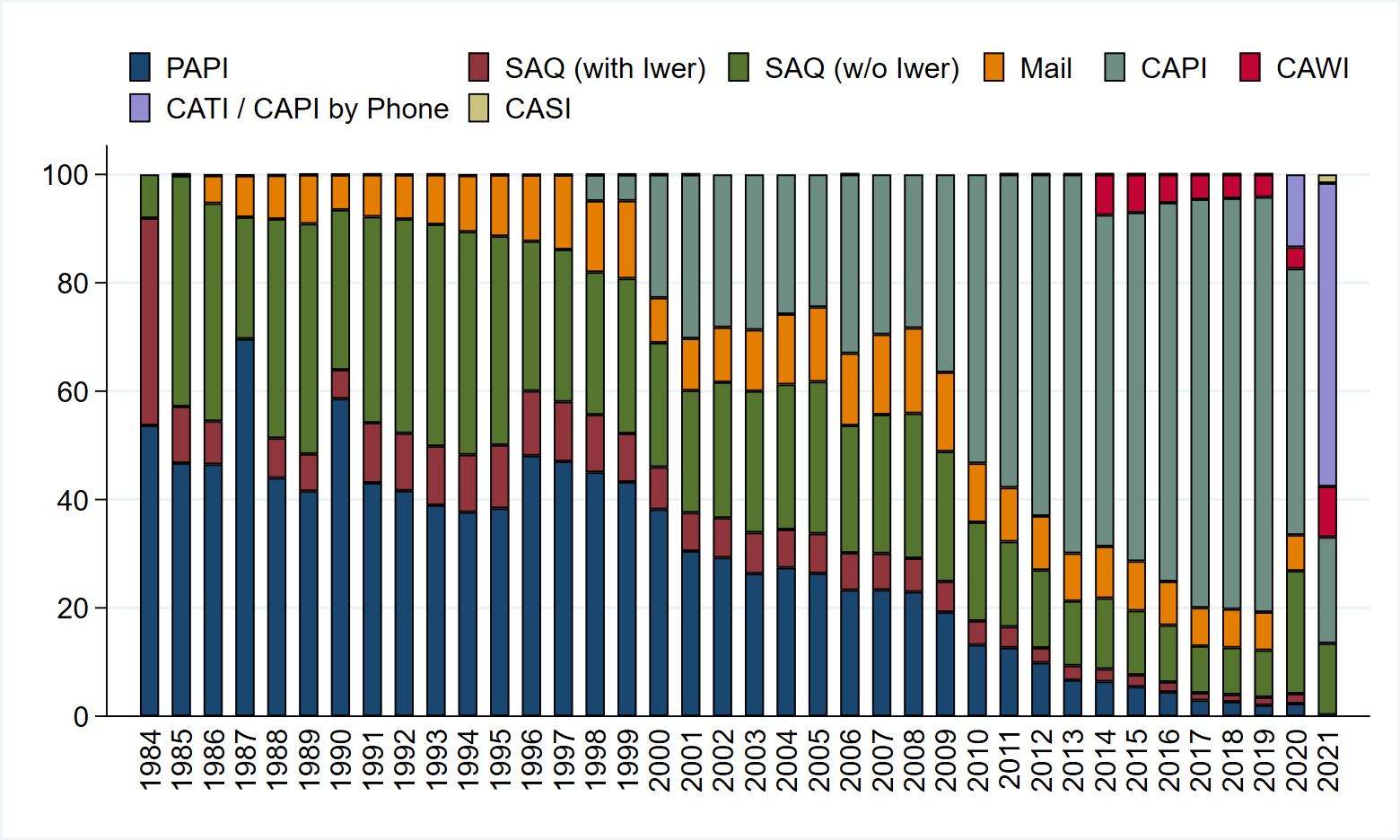Survey Concepts and Modes¶
Measuring stability and detecting changes means repeating (almost) identical measures over time. Furthermore, the SOEP questions capture stability and change by varying with regard to the time dimension, that is, asking about events in the past, the present, and the future. Conceptually, different measurements of time are used:
Questions about a point in time (present), e.g., current employment status or current levels of satisfaction
Retrospective questions about certain events in the past, e.g., how often have you changed jobs in the last ten years?
Retrospective life event history since the age of 15 (in the past), e.g., employment or marital history
Monthly calendar information on income and labor market participation (in the past), e.g., employment status January through December of last year
Questions about a period of time (in the past), e.g., demographic changes since the last interview such as marriage or death of spouse
Questions about the future, e.g., expected satisfaction with life five years from now, or job expectations
Survey Modes
The SOEP uses several different modes to collect the data. Originally, the respondent’s answers were always recorded by an interviewer who filled in the answers in a paper questionnaire, the “pen-and-paper interview” or PAPI. The personal contact between interviewer and respondent is important for the success of the survey; however, before losing a respondent due to a scheduling conflict between interviewer and respondent, the SOEP has allowed respondents to mail in the questionnaire since the second wave of subsamples A-I. This is not the same as the concept of a regular mail survey, because the interviewer still maintains personal contact with the household and schedules appointments with respondents if possible. Starting with subsample J, only “computer-assisted personal interviews” (CAPI) are allowed, and thus it is no longer possible to mail in the questionnaires.
When visiting a household, the interviewer interviews household members one at a time and can also give questionnaires to other household members to complete without the interviewer’s assistance (self-administered questionnaires, SAQ). This is a time-efficient approach because it allows different household members to complete their questionnaires at the same time.
In 1998, computers were used for the first time in the SOEP for computer-assisted personal interviews (CAPI). Compared to PAPI, the CAPI mode is much more efficient in converting the data into an electronic format, which was an important asset especially with the extensions to the panel starting in the year 2000. The CAPI mode was first used parallel with PAPI, meaning that interviewers and respondents were free to chose how they wanted to do the interview. This was important for the “older” sample members (respondents as well as interviewers), who were used to the PAPI concept. Only in the most recent samples (starting in subsample J) is CAPI the sole interview mode. The figure depicts the development of modes up to 2011, showing that the CAPI mode has gained importance since its implementation.
Since the questionnaires have to be identical in both modes, CAPI is implemented in a relatively simple way in the SOEP and does not utilize all the technical possibilities of this interview mode. For example, the SOEP basically does not use any form of dependent interviewing (i.e., referring to respondent data from previous waves), because this cannot be easily implemented in the PAPI mode. Also, the filtering structure is very simple in the SOEP, because a respondent must be able to follow the interview path on paperon her/his own. Still, some technical features like the control of value ranges (e.g. month of birth, year of first marriage) or the randomization of scale items are implemented in the CAPI version of the questionnaire.
For the panel samples A-R, M1, M2, M7, the mixed-mode design introduced last year was continued for the 2023 survey.


Download STATA Code to create figure.
Last change: Sep 01, 2025